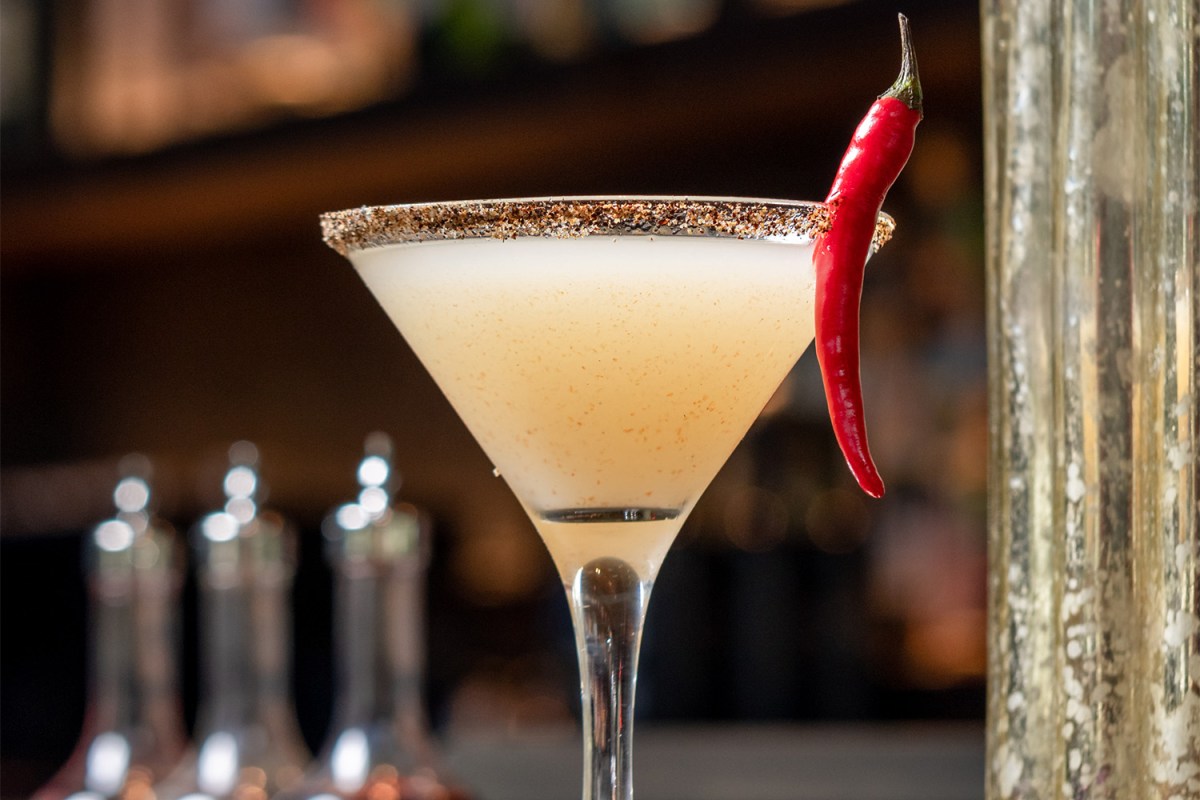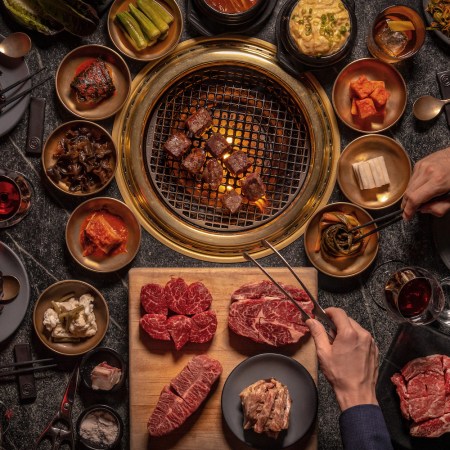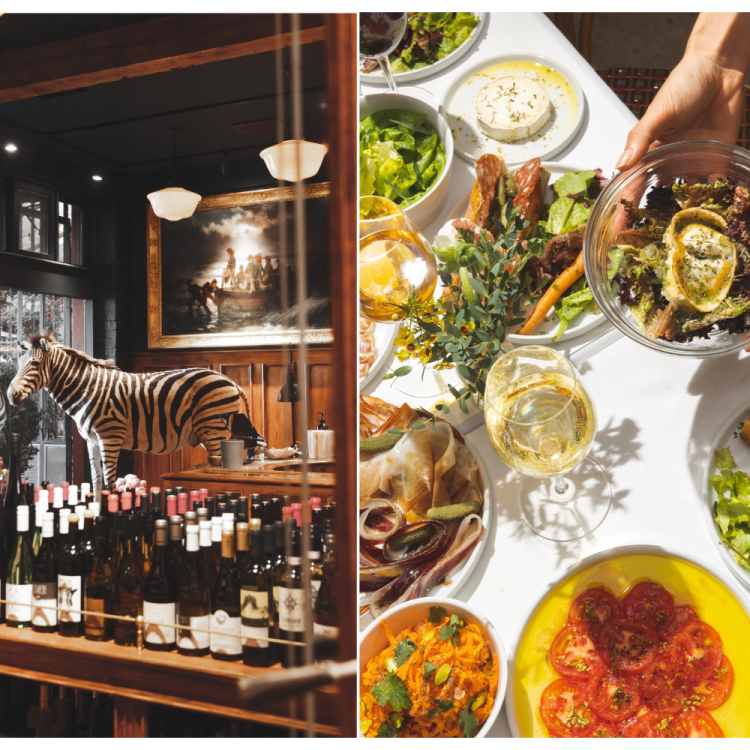Most cocktail lists have long skewed sweet, with fruit juices, infused syrups and more commingling with rum, vodka and gin. But lately things have been taking a more savory spin, with seaweed, chile and vegetables joining the fruit and botanicals we’ve long been used to.
Of course, as dirty Martini fans will be quick to note, making a Martini savory isn’t a total break from tradition.
“Martini drinkers favor familiar flavors and subtle complexities,” explains Fiola Miami’s head sommelier, Daniel Bishop. “The savory twist is a welcome nuance to the classic cocktail versus a radical departure from tradition.”
“A dirty Martini is nothing new,” echoes Mark Murphy, director of bar operations at Pastis Miami in Wynwood. “But playing with what we can use to make it ‘dirty’ has certainly been on the rise.”
His Le Petit Pickle cocktail, for instance, gets its briny character not from the traditional olive, but rather from French-style gherkin brine.
“I wanted a savory component that still felt bright and lively for the Miami heat,” explains Murphy. “A cornichon felt like the perfect place to start.”
At Fiola Miami, a similar, brine-forward approach has given rise to a Cerignola olive oil-washed Grey Goose Martini served with a splash of caper berry juice and caper berry garnish.
And brine isn’t the only way to add savory flair to this classic cocktail. The Fiery Salty Dog at Vela Sky sees gin or vodka (drinker’s choice) combined with salt, grapefruit juice and jalapeño, while at Hutong Miami, the Comfortably Numb unites Thai chili and green Szechuan peppercorns with sweeter staples like vanilla vodka and lychee. At Timpano Las Olas, meanwhile, Wheatley Vodka is served with cucumber, lime, a touch of prosecco and rosemary for a floral flair.
At Klaw Restaurant, lead bartender James MacInnes’s Mignonette Martini is inspired by a classic Gibson, which is made with gin and dry vermouth and garnished with a pickled onion in place of the Martini’s olive.
“Our Mignonette Martini leans into that further,” he says, “with diced shallots being part of the vermouth infusion.”
At LPM, meanwhile, the trademark Tomatini is made with Ketel One seasoned with white balsamic, Campari tomato, salt and pepper with a seasoned cherry tomato garnish — a concoction Barna Jeremias, bar director at LPM, says was crafted to reflect the southern French and Mediterranean accents of the menu. “It truly is like a match made in heaven for the style of cuisine,” he says.
Indeed, savory Martinis need not stand alone. The rise in this trend goes hand-in-hand with a wider diversification of beverage menus shaking the foundations of the philosophy that said wine was the only appropriate dinner drink. For Murphy, using veggies, brines and even stocks as cocktail bases “opens up so many more possibilities of how we can pair cocktails with every course of the meal.”
The Tiny Hack That Will Greatly Improve Your Gin Martinis
Gin, meet Scotch. And maybe hold the vermouth. We’re having a Smoky Martini.Toying with Martinis can nevertheless sometimes lead to an eyebrow-raise from proponents of the classic.
“Martinis are still wildly misunderstood,” says MacInnes. “If you ask a cocktail bartender, it’s a sacred mix of spirit, vermouth and sometimes bitters. More often than not, it’s assumed to be a hefty pour of straight spirit that’s been shaken to the brink and served in a cocktail glass.”
That said, this holy grail beloved by the likes of James Bond and Ernest Hemingway often shares the spotlight with what MacInnes dubs the “tini” — your appletinis and lemon drops, far sweeter cocktails bonded with the classic in name and glassware only.
But while for MacInnes, these drinks “by definition don’t even conform to traditional lore,” he’s happy to let each drinker choose the ‘tini that best suits their palate, whether it hews to tradition or not.
“I know that a textbook ‘Martini’ is gin and vermouth, which is perfectly delicious,” he says. “I also know that people may now associate the word ‘Martini’ more with the glass than the proper cocktail. I say, ‘Who cares?’ You can drink your cocktail in whatever way makes you happy.”
Indeed, for Jacob Johnson, corporate beverage director at Timpano Las Olas, the Martini is inherently riffable.
“It’s only natural for bartenders to push the limits of the norm to fit their vision,” he says. “The Martini today is 10-fold more dynamic than it was in post-Prohibition.”
That said, when it comes to the classic, our bartenders, like most, have opinions.
“I personally like a 5:1 spirit-to-vermouth build with a classic London dry gin,” says MacInnes. “Three dashes of angostura orange bitters and a lemon twist. Served in an ice cold coupe glass and has to be as cold as humanly possible.”
Jeremias, meanwhile, notes that his preferences and approach have changed widely over the years.
“Earlier on, I really enjoyed a 6:1 martini made with Tanqueray Ten and Noilly Prat, stirred, garnished with a lemon twist,” he says. Now, to better play the long game — and reap the aromatic benefits of the vermouth — he’s switched to a 50:50 build.
For Johnson, dilution is key to fully enjoying a Martini’s aromatic potential.
“I like my classic Martini served with enough dilution to take the bite off of the spirit base,” he says. “Typically with gin, an herbal yet refined dry vermouth, and both a lemon twist and pimento olive on a skewer.”
Bishop notes that the ideal Martini depends on whether you’re opting for gin or vodka. “For vodka, up, shaken hard with ice crystals floating,” he explains. “For gin: a long stir, up, clean with a twist.”
As for Murphy, if he’s keeping things simple, he means to keep them super simple.
“If I want a ‘classic’ Martini, I’m going to go with gin — probably a London Dry or Plymouth style,” he says. “My only request is that if you’re using vermouth, you store it in the fridge.”
Join America's Fastest Growing Spirits Newsletter THE SPILL. Unlock all the reviews, recipes and revelry — and get 15% off award-winning La Tierra de Acre Mezcal.















